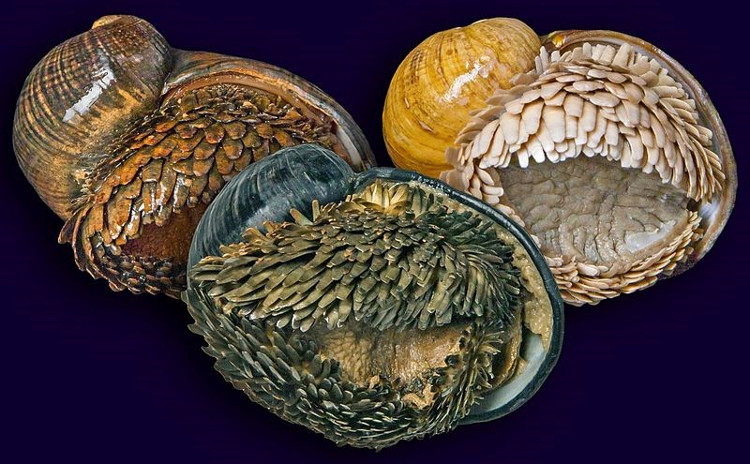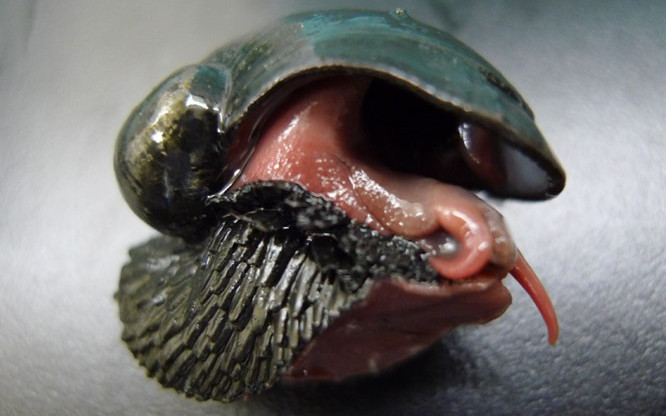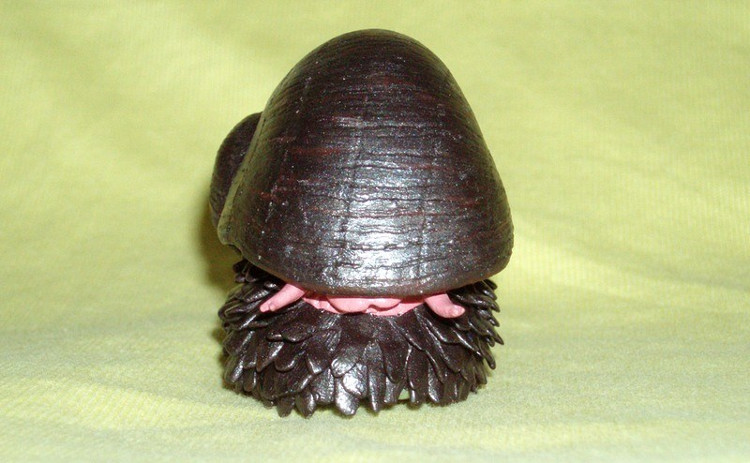Goose bumps with iron-legged animals with iron armor
Very deep in the bottom of the Indian Ocean, near the hot hydrothermal vents, where hot streams erupt into black and tall smoke columns, there are exotic bipedal animals with the scientific name Chrysomallon squamiferum. This is a species of hydrothermal snail belonging to the mollusc family living in the deep sea.
The harsh living environment makes snails adapt themselves with a unique set of "armor" . It is a three-layer shell.

Hydrothermal snails live in the deep sea.
The outermost layer is about 30 micrometers thick, made of iron sulfide. This layer can break when hit but it is also a way for snail to absorb energy, and discourages any enemy who wants to attack it.
The middle layer is organic horn, similar to the thin protein coating above other shells. It is also the thickest of the three layers and is also the thickest (about 150 micrometers), which acts as an "analgesic" organic cushion for snails.
The innermost layer is aragonite - a form of calcium carbonate commonly found in the bark of many different molluscs and corals.

This is the only species on Earth that is known for its ability to use iron in its own shell as a protective layer.

Harsh environment makes the snail adapt to a 3-layer shell.
Thus, each layer in the snail's thick shell plays an important role in contributing to the defensive effectiveness of snails. Scientists say this is the only species on Earth that is known for its ability to use iron in its own shell as a protective layer. The US military is currently working to create new armor effectively.
- With today's science and technology, is Iron Man's armor possible?
- The US Army is about to test the armor of '' Iron Man ''
- Decode goose bumps
- Real-life Iron Man armor: Flying with 5 jet engines, fighting against bullets
- If you've ever had this experience, your brain is special
- Look for the reason why some people get goose bumps when listening to music, others don't
- Why is urination more people often
- Hyundai unveils robot armor that gives you superhuman strength
- Ambition to build Iron Man of the US military
- The mystery behind the arc reactor in the Iron Man armor
- Why is there absolutely no three-legged creature on Earth?
- Cast iron technique from China
 Animal 'suffering' after hibernation
Animal 'suffering' after hibernation Why do goats climb well?
Why do goats climb well? Scientists were surprised to see chimpanzees eating turtles
Scientists were surprised to see chimpanzees eating turtles Giant catfish died deadly due to drought in Thailand
Giant catfish died deadly due to drought in Thailand